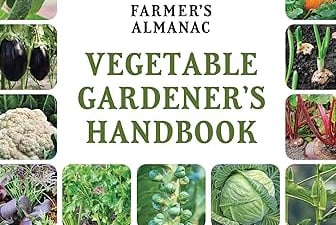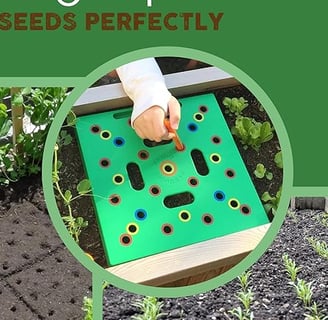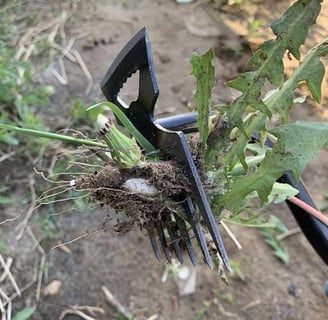The Best Gardening Hacks to Save Time & Money
7 min read


Introduction to Gardening Hacks
The art of gardening has evolved significantly over time, particularly with the introduction of innovative gardening hacks that aim to enhance efficiency and minimize expenditures. Gardening hacks refer to simple yet effective techniques that make the process of nurturing plants less labor-intensive and more cost-effective. These practical solutions can streamline various gardening tasks, from soil preparation and pest control to maximizing yield and water conservation.
In an era where sustainability is increasingly emphasized, the need to optimize gardening practices has never been more critical. By implementing effective gardening hacks, gardeners can not only save time but also sheer effort. For instance, employing companion planting can significantly reduce the risk of pests, thus lowering the need for chemical interventions and reducing overall gardening costs. This method promotes a natural ecosystem, allowing different plants to coexist and benefit from one another, ultimately leading to increased productivity.
The combination of modern technology with traditional gardening wisdom has led to numerous ingenious hacks that can be adopted by both novice and seasoned gardeners. Utilizing recycled materials, such as plastic bottles for self-watering systems, demonstrates how resourcefulness can lead to significant savings. Additionally, planning a seasonal garden that employs crop rotation can improve soil health and result in a more abundant harvest, decreasing the need for synthetic fertilizers.
Furthermore, maximizing efficiency translates not only into a more manageable gardening experience but also into financial benefits. By reducing labor costs and minimizing waste, gardeners can enjoy the fruits of their labor without incurring excessive expenses. Overall, understanding and implementing gardening hacks can transform a standard gardening venture into a more productive and economical endeavor, paving the way for the exploration of specific strategies in the subsequent sections.
Choosing the Right Tools for Efficiency
Efficient gardening requires the right set of tools that can significantly enhance productivity while minimizing time and effort. Selecting essential gardening tools should focus on versatility, comfort, and durability, ensuring that each tool contributes meaningfully to your gardening tasks. A well-chosen tool can make all the difference in transforming a daunting chore into an engaging and enjoyable experience.
One of the most valuable tools in any gardener's arsenal is the multitool. This handy device combines several functionalities into a single instrument, saving you from the hassle of changing tools frequently. A multitool can typically perform functions such as digging, pruning, and weeding, making it perfect for a variety of gardening tasks. In addition to multitools, ergonomic designs are highly recommended. Tools that feature comfortable grips and balanced weight distributions can greatly reduce the strain on your hands, wrists, and back, improving your overall efficiency as you work in your garden for extended periods.
Furthermore, consider investing in time-saving gadgets that can automate or ease certain gardening activities. For instance, self-watering systems can minimize the need for constant monitoring of moisture levels in your plants. Additionally, using garden shears with built-in ratchet mechanisms can significantly reduce the physical effort needed to cut through tougher branches. Regular maintenance of these tools is equally important to ensure they remain effective and long-lasting. Clean your tools after each use, sharpen blades when necessary, and store them in a dry place to prevent rusting and wear.
By carefully choosing the right tools that prioritize efficiency, you can create a productive gardening experience that saves both time and effort while allowing you to enjoy the fruits of your labor more fully.
DIY Solutions for Everyday Problems
When it comes to gardening, utilizing do-it-yourself (DIY) solutions not only helps in reducing expenses but also fosters a sustainable approach to plant care. Homemade compost is an excellent place to start. By collecting kitchen scraps such as vegetable peels, coffee grounds, and eggshells, homeowners can create nutrient-rich compost that enriches the soil. Composting not only reduces waste but also allows plants to thrive without the need for expensive fertilizers that may contain chemicals harmful to the environment.
Additionally, combating pests can often lead to significant costs associated with chemical pesticides. However, creating natural pest repellents using everyday household items is a viable solution. For instance, a mixture of water, soap, and garlic can deter numerous insects while remaining safe for plants. Another effective method is using diatomaceous earth, which can be sprinkled around gardens to eliminate unwanted pests without harming beneficial insects. Such DIY solutions not only protect plants but also preserve the surrounding ecosystem.
Another innovative DIY gardening hack is the creation of self-watering systems. These systems can be made from recycled materials—such as plastic bottles or old containers—allowing for efficient water use that maximizes plant hydration. To create a simple self-watering system, one can fill a plastic bottle with water, then poke small holes in the cap before burying it upside down in the soil. This method ensures plants receive a steady supply of moisture, reducing the time and effort required for frequent watering.
Incorporating these DIY approaches into gardening practices not only saves money but also empowers gardeners to make more environmentally friendly choices. By harnessing the potential of everyday materials and creativity, it becomes possible to cultivate a thriving garden sustainably.
Time-Saving Planting Techniques
Efficiency in planting can be achieved through several innovative techniques that not only save time but also enhance the overall yield of a garden. One of the most effective strategies is companion planting. This method involves planting different crops in proximity to benefit from their natural growth relationships. For instance, planting nitrogen-fixing legumes alongside heavy feeders, such as corn, can bolster soil fertility. This practice minimizes the need for additional fertilizers and reduces time spent on maintenance.
Another technique worth considering is succession planting. This method allows gardeners to maximize harvests throughout the growing season by staggering sowing times of different crops. Instead of planting all seeds at once, succession planting entails sowing seeds every few weeks. This can lead to a continuous supply of fresh produce, reducing the time spent replanting and managing mature crops. Not only does this method prevent the overwhelm of a simultaneous harvest, but it also enables gardeners to plan their time more effectively throughout the season.
Utilizing seed tapes or pods is another great time-saving technique. These pre-seeded biodegradable tapes or pods simplify the planting process by ensuring consistent spacing and reducing the time needed for direct sowing. They eliminate the need for thinning, as the seeds are already spaced correctly, promoting healthy growth. This method is particularly advantageous for novice gardeners or those with limited time, as it allows them to plant efficiently and with confidence.
Incorporating these time-saving planting techniques can free up valuable time while still achieving impressive results in the garden. By employing companion planting, succession planting, and the use of seed tapes or pods, gardeners can streamline their planting processes, leading to a bountiful harvest with minimal effort.
Watering Hacks to Optimize Resources
Efficient watering is essential for any gardener looking to conserve resources and ensure robust plant growth. One of the most effective methods is the implementation of smart irrigation systems. These systems utilize sensors and timers to assess soil moisture levels, delivering water only when necessary. By adhering to accurate watering schedules, gardeners can prevent overwatering, which not only conserves water but also minimizes the risk of root rot and other diseases that can result from overly saturated soil.
Another sustainable watering technique is rainwater harvesting. By collecting rainwater from roofs and directing it to storage tanks, gardeners can utilize this free resource for irrigation. This practice not only reduces dependency on municipal water supplies but also lowers utility bills significantly. To effectively harvest rainwater, homeowners should install gutters and downspouts that lead to a rain barrel, which can then be equipped with a spigot to facilitate easy access to the collected water.
The use of mulch is another beneficial strategy to optimize watering efforts. Mulch significantly reduces evaporation from the soil surface, thus conserving moisture and requiring less frequent watering. Organic mulches, such as wood chips or straw, also improve soil quality as they break down over time. A layer of mulch can help stabilize soil temperature, suppress weeds, and enhance overall garden health. By adopting these watering hacks, gardeners can strike a balance between maintaining vibrant plants and managing their water usage efficiently.
Pest Control on a Budget
Pest management does not necessarily require expensive chemicals or professional services. By adopting economical pest control methods, gardeners can safeguard their plants while saving money. Natural pest deterrents have become increasingly popular due to their effectiveness and environmental friendliness. For instance, planting marigolds can deter nematodes and other garden pests, serving as a beautiful companion plant in your garden landscape. Additionally, certain essential oils, such as peppermint and neem oil, not only repel pests but can be easily mixed with water and applied as a spray to affected areas.
Beneficial insects also play a vital role in maintaining a healthy garden ecosystem. Ladybugs, lacewings, and predatory wasps are excellent examples of natural pest controllers. These insects feed on common pests like aphids and spider mites. By creating an environment conducive to their presence—such as offering food sources through flowering plants and habitats like insect hotels—gardeners can encourage these beneficial species to inhabit their gardens naturally.
Preventative measures are equally critical in ensuring successful pest control. Maintaining healthy soil through composting and practicing crop rotation can significantly reduce the likelihood of pest infestations. Rotating crops interrupts the life cycles of pests and helps mitigate their populations. Additionally, using row covers or netting can protect young plants while they are most vulnerable, effectively shielding them from pests without relying on harmful chemicals.
Ultimately, understanding the pest dynamics in your garden allows for more strategic approaches to control. By embracing these budget-friendly methods, you can effectively combat pests while preserving the health of your plants and the environment.
Maintaining Your Garden Efficiently
Efficient garden maintenance is pivotal to achieving a flourishing outdoor space without an excessive commitment of time or resources. One prominent strategy for maintaining your garden is to implement a regular schedule for tasks such as weeding, pruning, and harvesting. By establishing a set routine, you not only mitigate the daily workload but also enhance the overall health of your plants. Frequent, short gardening sessions can often be more beneficial than infrequent, lengthy ones, allowing for timely intervention and care.
To minimize effort, consider adopting mulching techniques. Mulch serves as a barrier that can suppress weed growth, retain moisture, and regulate soil temperature, thereby reducing the frequency of both watering and weeding tasks. Organic mulches such as wood chips or straw also break down over time, enriching the soil, which may contribute to healthier plants that require less attention.
Moreover, utilizing raised beds can simplify the process of caring for your garden. These structures can improve drainage and reduce the need for bending, promoting a more ergonomic gardening experience. Furthermore, raised beds can contain specific soil blends tailored to the needs of your plants, ultimately resulting in a more productive garden with less oversight.
In the realm of pruning, employing sharp, well-maintained tools is essential for making clean cuts that promote healthy regrowth. Scheduled pruning sessions, paired with knowledge of each plant's specific requirements, can lead to enhanced growth patterns and reduced pest problems, streamlining your maintenance efforts. Additionally, consider successional planting; this technique not only maximizes your garden space but also staggers harvest times, leading to less intensive work periods.
By implementing these practices, you will be able to maintain your garden efficiently, ensuring that you enjoy the fruits of your labor without overwhelming commitment. Ultimately, a well-organized approach allows for a delightful gardening experience while effectively managing time and resources.











